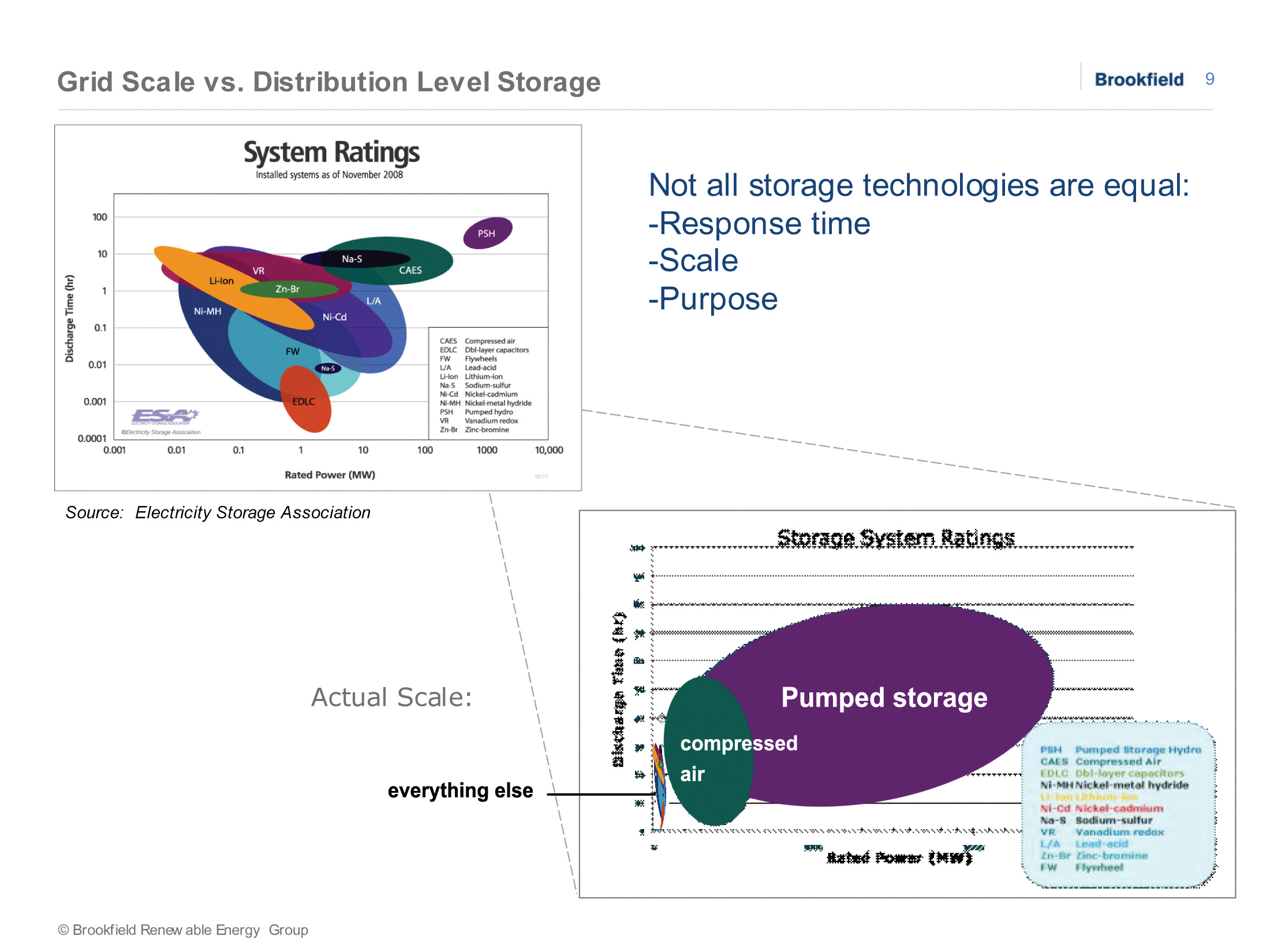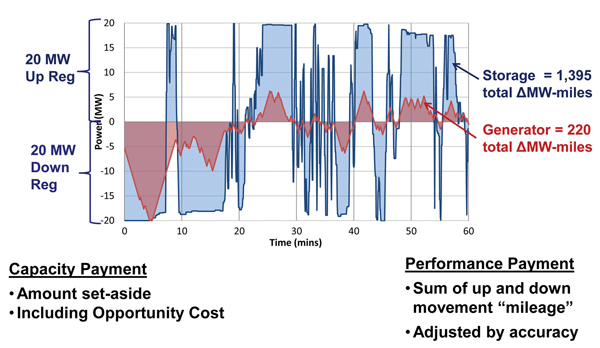In its role as Ontario’s Independent Electricity System Operator, the IESO is procuring up to 35 MW of ancillary services from electricity storage, as part of its system operability toolkit. Speaking in a session at the recent APPrO conference in November 2013, Kim Warren, Chief Operating Officer at the IESO, offered a quick summary of what operability means from the IESO’s perspective:
• system reliability at low and at peak load periods
• energy ramped and efficiently moved to load centres
• operation within normal voltage levels, including after any unplanned contingency
• on loss of a component, the system can be repostured to industry standards (within 30 minutes)
• reliable and diverse energy supply. The IESO is not technology-dependent.
• equipment does not fail often, and can be repaired quickly
• a contingency on a single element does not mean loss of load (unless directly connected)
• effect of extreme contingencies is limited, like loss of a transmission corridor
Within that set of parameters, the IESO / OPA procurement framework lists several types of ancillary services that storage can provide:
• balancing services (e.g. operating reserve and regulation)
• emergency response services (e.g. black start capability)
• power system operation services (e.g. reactive support and voltage control)
• aiding in electricity ramp (up or down);
• aiding in surplus baseload generation management;
• allowing the deferral of expensive T&D additions
• addressing short-duration transmission or distribution congestion;
• smoothing the output of variable generation resources, particularly for the neighborhood on a distribution line.
• – otherwise providing reliable supply capacity at the local level
• any other such services established by the market rules.

Energy storage services exist on a spectrum of timescales, as shown in the second graph,

but they tend roughly to cluster towards one end or the other of the scale, with hours or days, even months worth of power that can be saved and delivered at one end, down to millisecond response times used to manage power quality. With its vast reservoirs in the north of the province, Hydro-Quebec has the ability to store months, or even a year’s worth, of water for hydro power. Northland’s planned Marmora pumped storage will be able to deliver 400 MW of power for five hours.
Pumped storage – in most operations, water that can be cycled between a lower and an upper reservoir, using less-expensive off-peak power or even surplus capacity and releasing it during peak periods, is by far the most common form worldwide. Compressed air, pumped into underground caverns, is also used where geology permits, and is the closest to pumped water in terms of capacity.
In the same category, although smaller than those using natural caverns, is Hydrostor’s facility, under development just offshore from the Toronto islands, will be able to provide 650 kW of power for two hours to bolster peak demand in downtown Toronto.
Roughly in the same size bracket, although not presently represented in any plans for Ontario, are flow batteries, that relies on charging and discharging an electrolyte that can exist in two states of ionization, in a solution pumped back and forth between two tanks, one for the charged solution and one depleted. An electrolyte using vanadium is currently the basis for most applications, though at team at Harvard University is working on finding a less expensive material. Flow batteries, while unlikely to grow to the size of even compressed-air storage, have the advantage of being modular, so that an installation can be sized up as needed.
At the lower end of the scale are technologies that can store up to a few tens of megawatt-hours, and whose use lies in their quick response time, down to milliseconds. They include batteries of various types, from the traditional lead-acid to lithium ion, lithium polymer, and sodium-sulfur, in grid-scale applications; flywheels, and ultracapacitors. Flywheels and batteries are in use or planned in several current applications in Ontario; for this issue we are not aware of any ultracapacitors being used or planned for ancillary services of the type the IESO is seeking.

See also “Renewable Power, Evolving Smart Grid Boost Energy Storage,” IPPSO FACTO February 2013, for a more complete discussion of these technologies.
